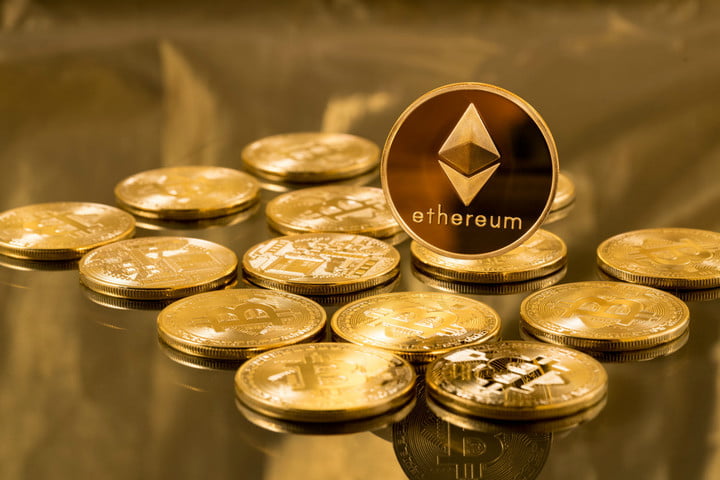
Source: PaxForex Premium Analytics Portal, Fundamental Insight
Since its inception in July 2015, Ethereum has witnessed an astounding surge in value, soaring from a mere $0.31 to its current price of $3,000. This translates to an extraordinary return on investment of nearly 10,000 times! If you had allocated just a few hundred dollars to Ethereum a decade ago, chances are you would be sitting on a millionaire's fortune today.
However, the burning question remains: does Ethereum still possess the potential to propel you to millionaire status? While Ethereum's past performance speaks volumes, the outlook becomes murkier when contemplating its future trajectory.
Upon its debut in 2015, Ethereum stood unrivaled as the sole smart contract blockchain platform, enjoying an enviable first-mover advantage. It wasn't until 2020, with the emergence of blockchain contender Solana, that Ethereum encountered its first credible challenger.
Consider this: envision your favorite Silicon Valley tech giant enjoying an unparalleled five-year head start over its competitors. After such a substantial period, it would likely have established an overwhelming dominance in market share, intellectual property, and customer loyalty. It would seem virtually invincible.
However, applying this analogy to Ethereum's situation, it becomes apparent that replicating its past success is a daunting task, if not impossible. The landscape has evolved significantly since Ethereum's inception, with a plethora of competitors vying for dominance. Unlike in 2015, Ethereum now faces stiff competition, with three of the top 15 cryptocurrencies posing direct challenges to its supremacy.
Furthermore, enthusiasm for Ethereum's continuous blockchain upgrades has waned somewhat. While the 2022 blockchain upgrade, dubbed The Merge, was undeniably impressive, likened to changing the engine of a plane mid-flight, it also signaled a turning point. The Merge undoubtedly enhanced Ethereum's performance, making it faster, more cost-effective, and more efficient in transaction processing. However, the relentless pursuit of upgrades raises concerns about Ethereum's stability and long-term viability.
Nevertheless, Ethereum's initial promise of delivering 1 million transactions per second remains unfulfilled, leaving us far from reaching that milestone. What's more concerning is that Ethereum now relies on a complex array of Layer 2 blockchains to address scalability and functionality issues. The core Ethereum blockchain, known as Layer 1, struggles with speed and efficiency, unable to cope with current transaction volumes. As a result, we anticipate several more upgrade cycles, each introducing new adjustments and enhancements.
While incremental innovation is commendable, there's a notable distinction between incremental and truly disruptive innovation. This is where apprehension lies regarding Ethereum. The Merge may have marked the end of disruptive innovation, potentially paving the way for agile competitors to challenge Ethereum's dominance.
Adding to the uncertainty is the ongoing scrutiny from the Securities and Exchange Commission (SEC). Following The Merge, the SEC has yet to determine whether Ethereum should be classified as a commodity or a security. The transition to a proof-of-stake blockchain could have regulatory implications, especially concerning the staking process, which some may interpret as an investment with profit expectations derived from others' efforts.
While this legal nuance may seem arcane, it holds significant implications for investors. Bitcoin maximalists are reveling in Ethereum's regulatory uncertainty, and there's a tangible risk that the SEC might classify Ethereum as a security. While this might not pose an existential threat to Ethereum, it could deter many investors.
Consider this: if you have $1,000 to invest in cryptocurrency today, achieving millionaire status would require a 1,000-fold return on your investment. Therefore, the pertinent question regarding Ethereum's potential as a millionaire-maker cryptocurrency is whether it can appreciate by 1,000 times its current value of $3,000.
Such an astronomical rise would imply a staggering $3 million price per Ethereum coin in the foreseeable future. With Ethereum's circulating supply standing at 120 million coins, this would translate to a total market capitalization of $360 trillion. To put this into perspective, the current total market capitalization of the S&P 500 is approximately $50 trillion.
In essence, relying solely on past performance for investment decisions is akin to driving a car while fixating on the rearview mirror. It's imperative to shift focus towards Ethereum's potential to generate value in the future, rather than dwelling on its historical track record.
As long as the price is above 2800.00, follow the recommendations below:
- Time frame: D1
- Recommendation: long position
- Entry point: 2196.50
- Take Profit 1: 3200.00
- Take Profit 2: 3400.00
Alternative scenario:
If the level of 2800.00 is broken-down , follow the recommendations below:
- Time frame: D1
- Recommendation: short position
- Entry point: 2800.00
- Take Profit 1: 2700.00
- Take Profit 2: 2500.00













